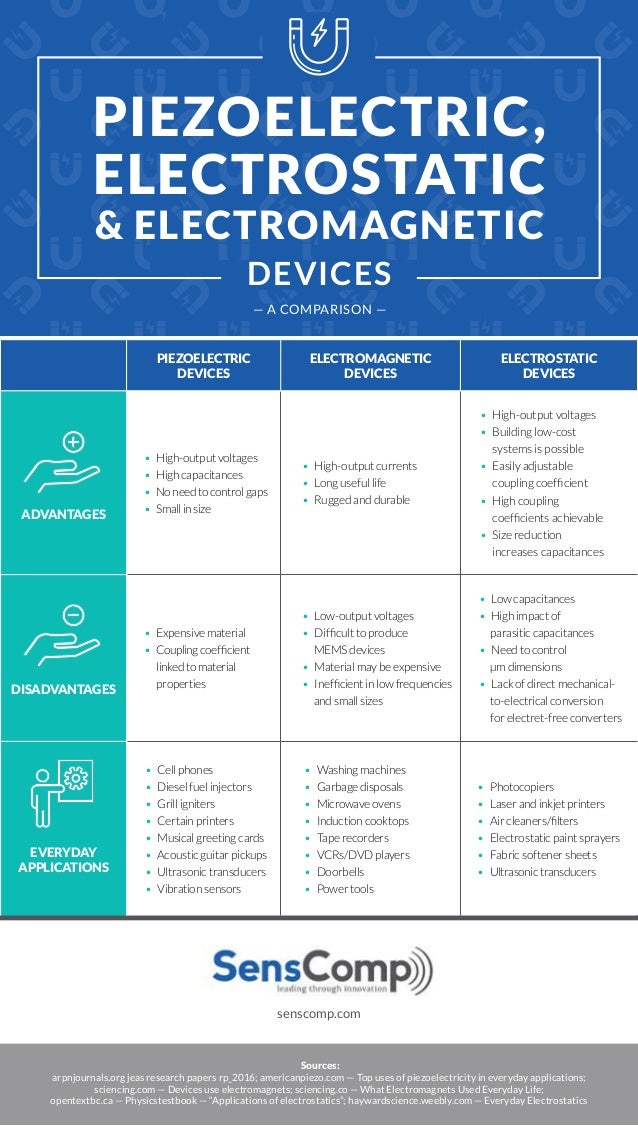As connected devices become commonplace across industries and applications, interest in the Industrial Internet of Things (IIoT) is on the rise. In fact, 95% of companies note that IoT applications have greatly affected their industry.
The challenge isfinding the best-fit use case for connected devices to apply their benefits at scale. Consider connected sensor solutions.Recent research speaks to the uptick of electrostatic sensor applications for the online monitoring of wind turbine gearboxes.For other applications, meanwhile, electromagnetic or piezoelectric options may be the ideal operational addition.
Not sure which sensor best aligns with your IoT implementation? Let’s break down the basics with a comparison of key device principles, functional benefits and potential limitations.
An Attractive Option
Electromagnetic devices combine — you guessed it — electricity and magnetism to deliver substantive and reliable device output. The simplest version of an electromagnet uses a length of copper wire looped around a piece of iron.When an electric current is passed through the wire, the iron becomes magnetized. The reverse is also true: Magnetizing the iron will produce an electric current in the copper wire.
These devices are ideal in circumstances that require definitive “on” and “off” states.For example, they’re often used in dishwashers and washing machines to control the flow of water. When current is applied, magnetized components release, and water is allowed to flow. When current is terminated, these components securely close. Electromagnets are also rugged and robust — making them ideal for use cases that require substantive repetition and heavy stress, such as in power tools or garbage disposals.
There are situations, however, where magnets are not the ideal option. While they deliver high-output currents and have long lifespans, they are expensive andinefficient at small sizes.Put simply,if your application is in a high-stress environment and requires a large-scale sensor, electromagnets can help stick the landing.
Success Under Stress
Piezoelectric devices are types of sensors that make use of the piezoelectric effect, which causes a charge differential in crystals when mechanical stress is applied. This forces negative and positive charges to opposite sides of the crystal face, where they can be collected by metal plates to produce voltage. Much like electromagnetics, this effect also works in reverse. Applying electrical energy to the crystal will cause it to produce mechanical energy as it deforms.
Piezoelectric devices offer the benefit of high-output voltages and high capacitances at extremely small sizes. These devices are often used in ultrasonic applications such as cellphones, musical greeting cards and vibration sensors.
They’re not ideal for every use case, however.High costs to produce combined with the fact that material properties substantially impact the overall coupling coefficient means these devices aren’t a good fit for high-stress applications and require regular maintenance to ensure they’re delivering optimum performance.
Maximizing Your Potential
While electromagnetic and piezoelectric devices remain the most popular sensor options on the market, electrostatic options offer an alternative for specific applications that aren’t well-served by magnet- or crystal-dependent devices.
Instead of charging magnets or deforming crystals,electrostatic options leverage the active advantage of potential energy by using mechanical energy to separate electrically charged plates. When these plates are separated, the potential energy holding them is discharged and can be captured to produce sensors that deliver constant charge or constant voltage.Electrostatic solutions are often found in photocopiers, laser and inkjetprinters, air cleaners, and ultrasonic transducers.
Electrostatic devices have drawbacks such as low capacitances; the lack of direct mechanical-to-electrical conversion; and the need to precisely control device measurements for maximum output. Yet they also offer the benefit of low-cost device production and easilyadjustable coupling coefficients — all at extremely small sizes.
As a result, electrostatic devices are now finding use in IoT applications that require precise sensor measurements and reliable performance at lower costs than piezoelectric options andsmaller sizes than electromagnetic solutions.
Sensors and Sensibility
When it comes to deploying sensor solutions at scale, no single type offers the bestfit for every application. Instead, maximizing value and delivering ROI depends on finding the ideal sensor framework — electromagnetic, piezoelectric or electrostatic — for your specific use case.Be sure to review the accompanying resource for a side-by-side comparison.

This infographic was created by SensComp, a manufacturer of ultrasonic transducers
Author bio: Margaret Bezerko is President of SensComp, a world leader in ultrasonic sensors. She has 18 years of experience in the industry and currently focuses on leading the company in second stage growth.







